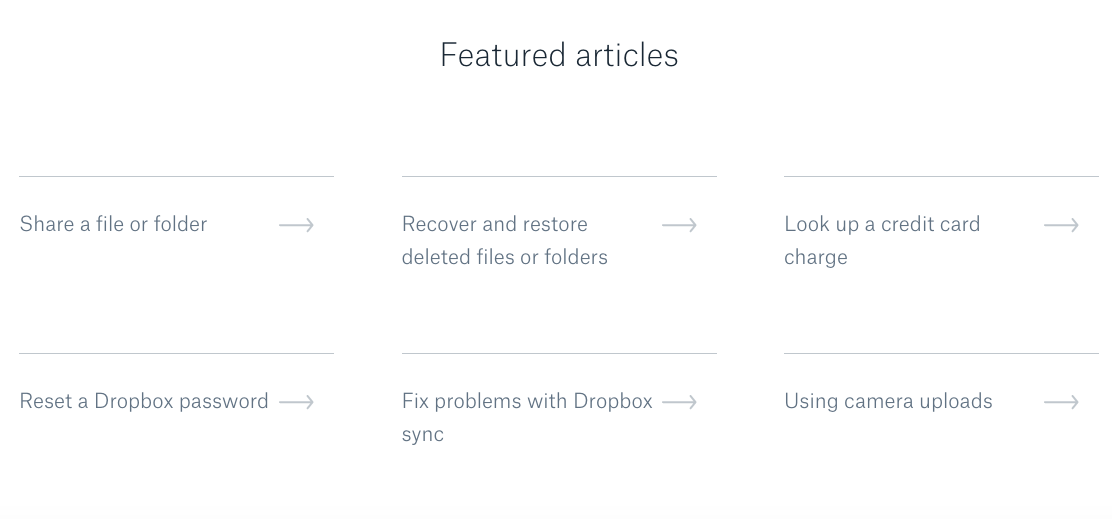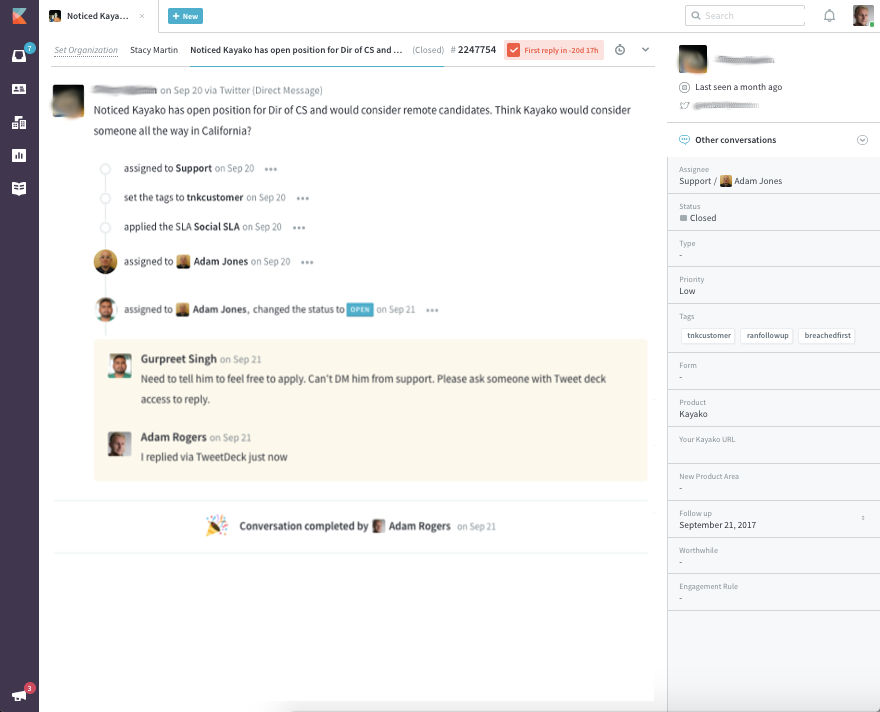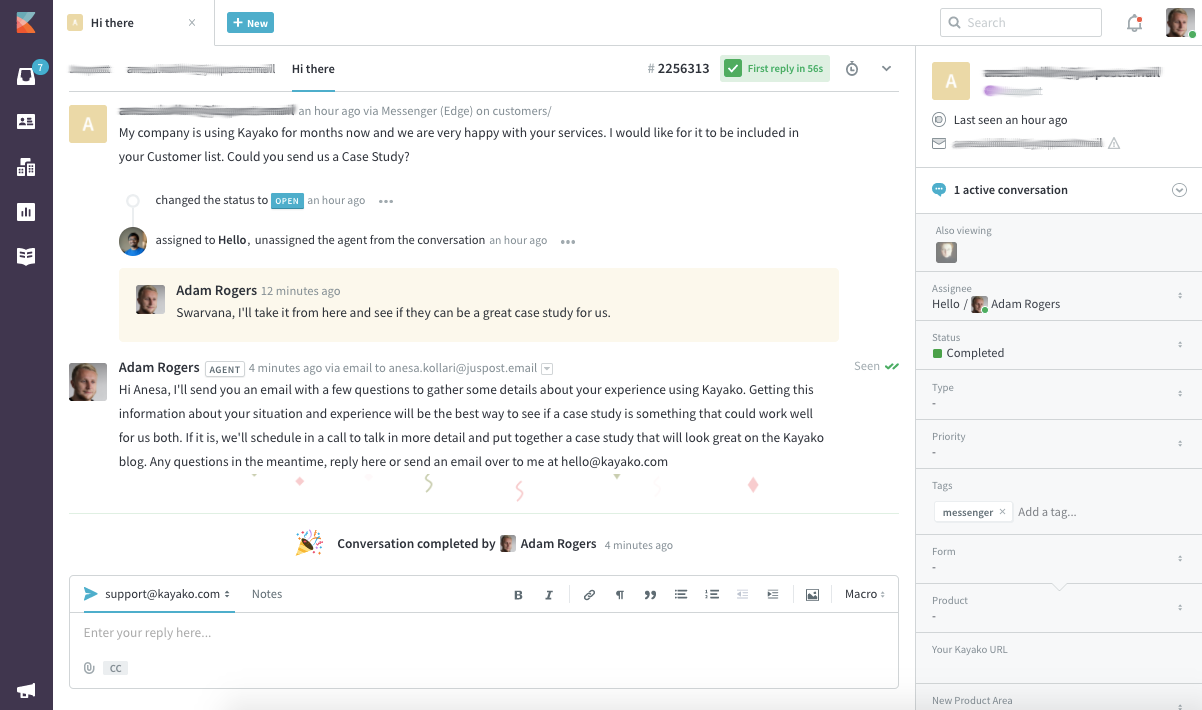This is a guest post from our friends over at Campaign Monitor. Kim Courvoisier will teach you 6 ways marketing and customer support can collaborate to create more consistent customer experiences.
Customer support is a priority for many brands, especially since 3 out 4 customers spend more money with companies that provide superior customer service.
However, customer support teams often function as their own unit. They’re siloed away from marketers, designers, product managers, and others that can influence the overall customer experience.
But the brands that are successful in offering customer support say no to these silos. Instead, they have an integrated team where support works hand-in-hand with marketers to improve the overall customer experience.
Ultimately, customer support staff has a wealth of marketing knowledge, as they interact with dozens of customers each day. Marketers have something to offer, too – they often have tools, resources, and new ideas on how to improve the support experience.
Working to bring your marketing and support teams together? Here are 6 ways the two groups can work together to improve the customer experience.
1. Create a resource center
Your support staff is on the front line with customers. They answer questions, field complaints, and fix problems. It’s not an easy job, especially since customers often come to support when they’re struggling with a hard to fix issue.
Marketing can ease this workload by creating relevant content for customers in a resource center.. A growing number of brands have created these robust micro-sites which give customers the ability to search for solutions to commonly asked questions.
To be successful, customer support representatives need to identify common problems and concerns, helping marketers create step-by-step guides that provide solutions that customers need.
A resource center should be searchable, full of individually focused articles, and easy to navigate.
For example, Dropbox has a resource center with a search bar to help customers find what they need.

Below the search bar, Dropbox features its most commonly read articles for easy access. Customer support staff can suggest which articles should be in this section. After content is created, the marketing team can watch website metrics to ensure the most used content is available in this section.

By working together to identify common problems and creating content that provides solutions, customer support should see a reduction in the number of calls as customers solve their own problems through online resources.
2. Monitor social media channels
Some brands offer customer support on social channels. Xbox, for example, has multiple Twitter accounts devoted to customer support which are frequented by thousands of customers.
Even if you don’t have the resources to offer support on social, and many don’t, customers still reach out on Facebook or Twitter with questions.
When this happens, members of the marketing team, who usually manage the social sites, should respond to the customer and ask him or her to privately to send their contact information so a customer support representative can get in touch.
Marketers should serve as the go-between here, passing customer contact information to the support team as needed.
Marketing can also collaborate with support in those not-so-everyday conversations. Like when someone expressed an interest in an open job for the Director of Support at Kayako, and sent a Twitter direct message to @KayakoOps, not @Kayako.

3. Create personas
Both the marketing and customer support team can benefit from building customer personas. Both teams gather data and feedback from customers and can build profiles that help the company define its audience.
Here’s a great example of a customer persona from Buffer. It’s a detailed snapshot of a targeted customer:

In many cases, the information that customer support representatives gather isn’t shared. They work one-on-one with customers, and yet their knowledge is often overlooked. Marketers should bring customer support staff into the conversation to strengthen profiles.
Once created, make sure your personas are accessible to everyone. Whether they’re available on the company intranet or printed and posted on the wall, customer personas help everyone focus on the end user.
Personas also help the two departments communicate. When customer service notices an increased call volume from a specific persona, they can discuss the problem with marketing and a tailored campaign can be leveraged to meet customer needs.
4. Market customer service
Customer service is a differentiating factor for customers. It’s one of the reasons your customers chose your brand over another.
If your company strives to make every customer’s’ experience phenomenal, it’s a trait that marketers should tout. Everything from the website to the company brochure should mention your customer service and why it’s amazing.
Marketers should talk with customer support representatives to understand the process so they can accurately portray it.
For instance, if the company offers local, in-house support that doesn’t require customers to go through menus or be redirected to multiple people, the marketing team can highlight that feature on behalf of support.
5. Identify potential brand advocates
While it’s common for customer support reps to handle a lot of complaints, they’ll also come across customers with positive things to say.
When a customer has a good experience, speaks highly of your product, or uses your product in a way that might make a great case study, customer support reps can pass the customer’s contact information to the marketing team.
Marketers are always looking for customers to offer testimonials since 84% of customers trust online reviews, according to a survey from BrightLocal.
Testimonials can be added to emails, presentations, and other promotional material to encourage customers to buy a product.
Case studies are also beneficial, as they provide statistical data that shows how your product helps a specific company.
Marketers can explain what kind of customers they’d like to connect with and the customer support team can collect contact information as they take calls and answer emails.

6. Create email templates for follow up
Once a customer reaches out for help, it’s important to follow up. If your brand wants to offer five-star service, the response can’t end when the phone hangs up. Follow up emails make sure customers are satisfied with the service and have access to resources should the need arise again.
In some cases, brands might use the follow up email to collect feedback and see how their customer service process can improve.
Whatever the purpose of the email, the marketing team can help with it. Marketing can create an email template that offers consistent branding and voice and let customer support reps customize the email to each customer.
This kind of teamwork benefits the customer and should positively affect his or her opinion of the company.
Collaboration between the customer support team and marketers can have dramatic effects on the customer experience. As the teams get used to working together, they’ll find new ways to represent your brand in a positive, trustworthy way and create the kind of interactions that customers rave about.
Author bio
 Kim Courvoisier is the Director of Content Marketing and Social Media at Campaign Monitor. She loves all things marketing and good puns. Follow her on Twitter at @Stiggy1
Kim Courvoisier is the Director of Content Marketing and Social Media at Campaign Monitor. She loves all things marketing and good puns. Follow her on Twitter at @Stiggy1

